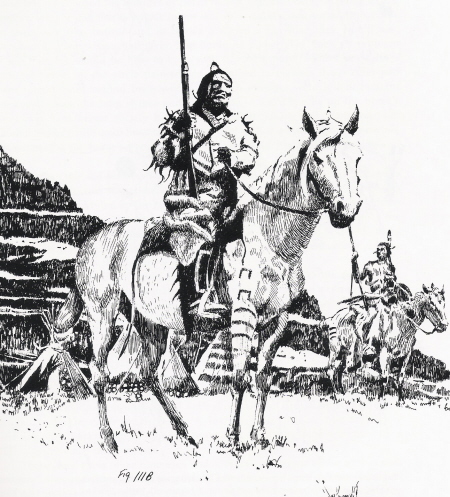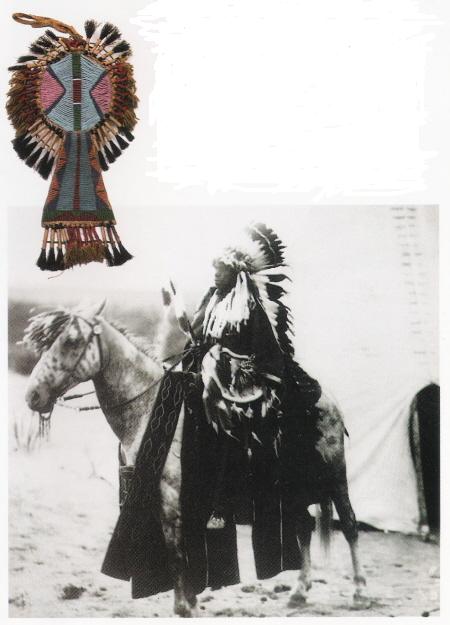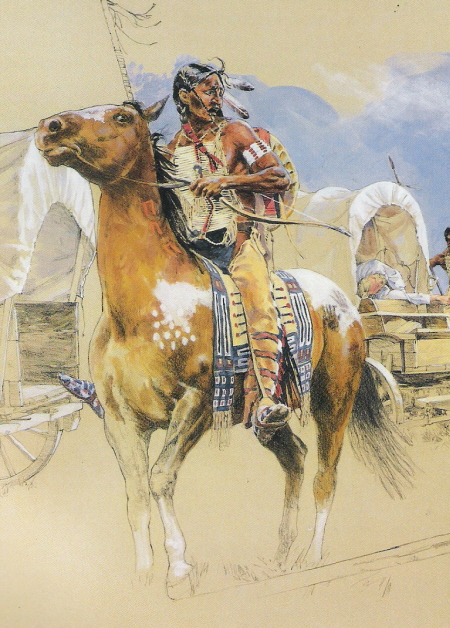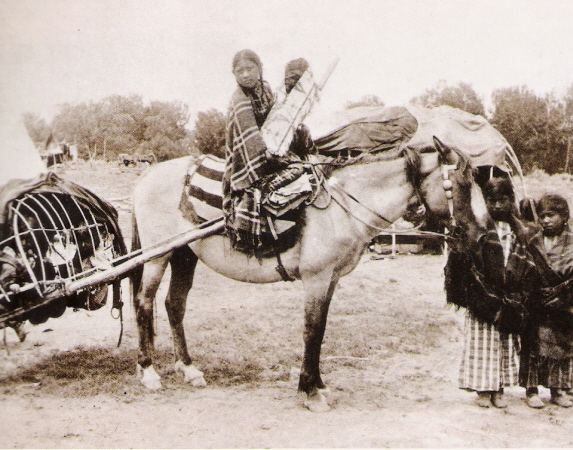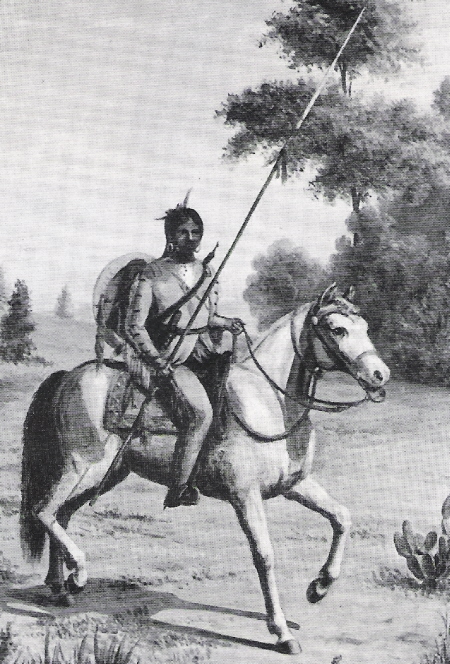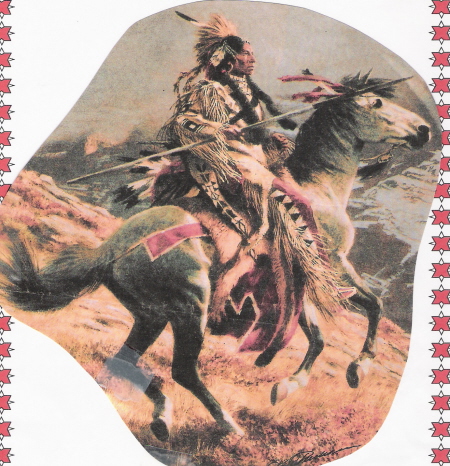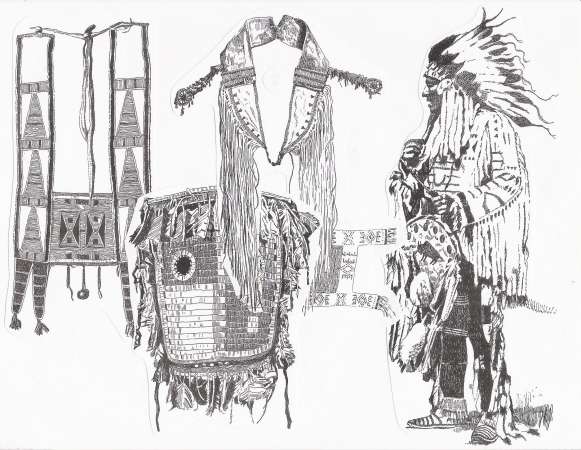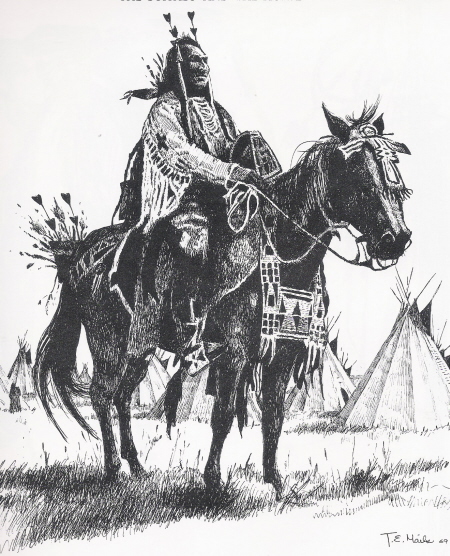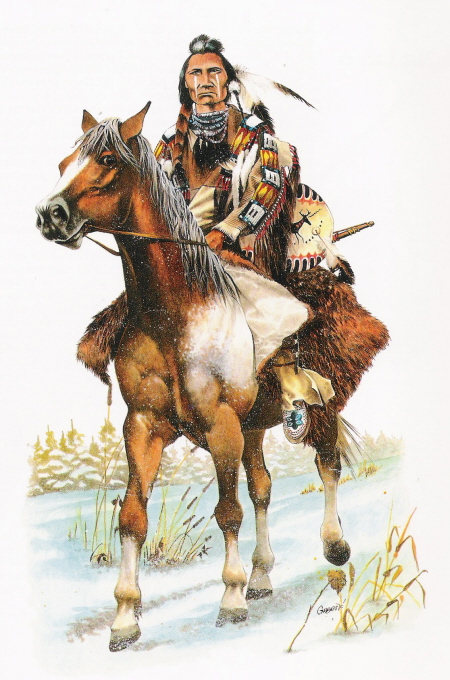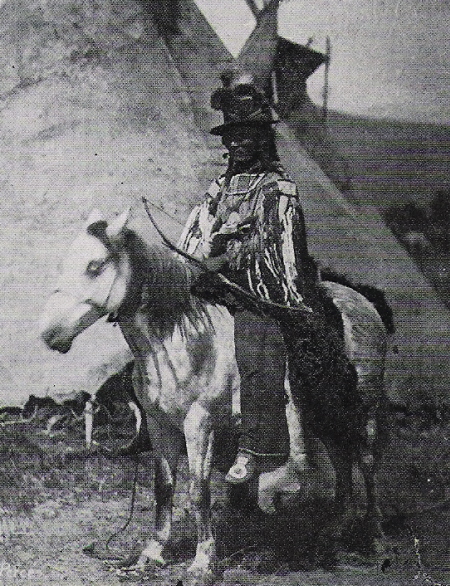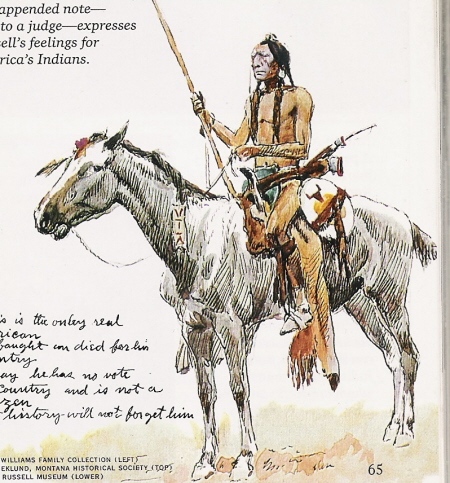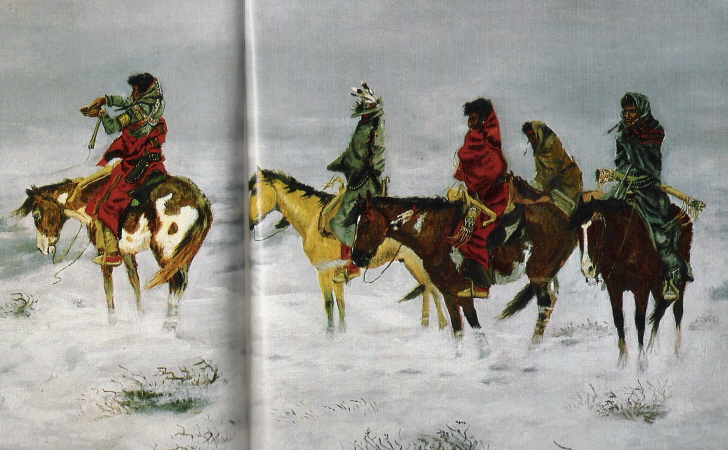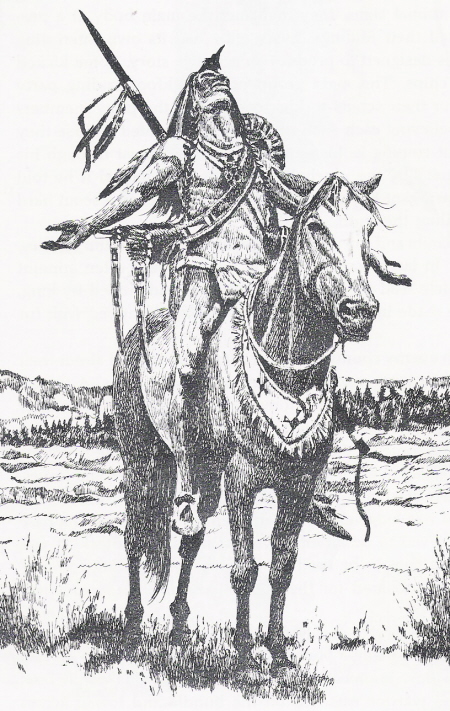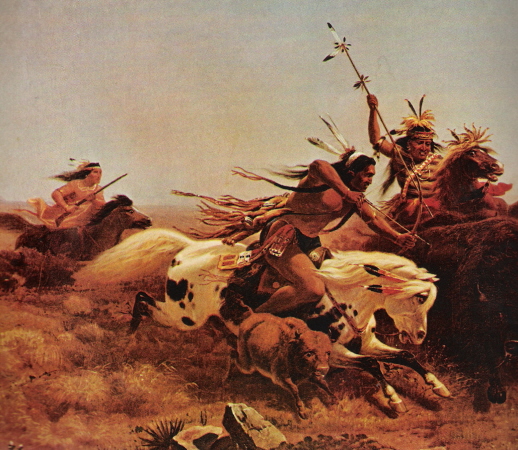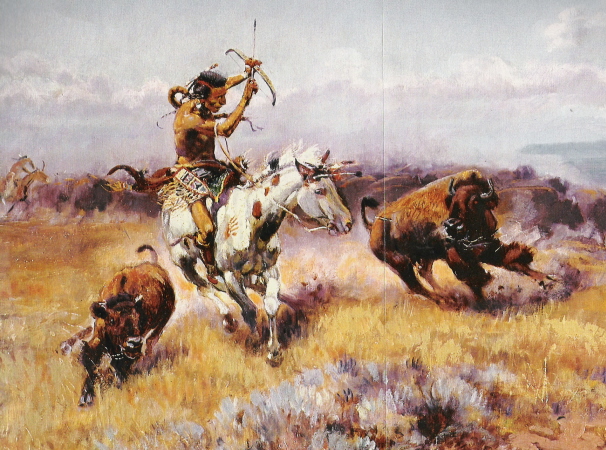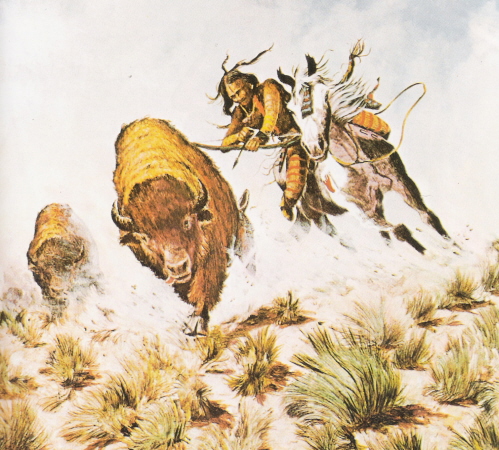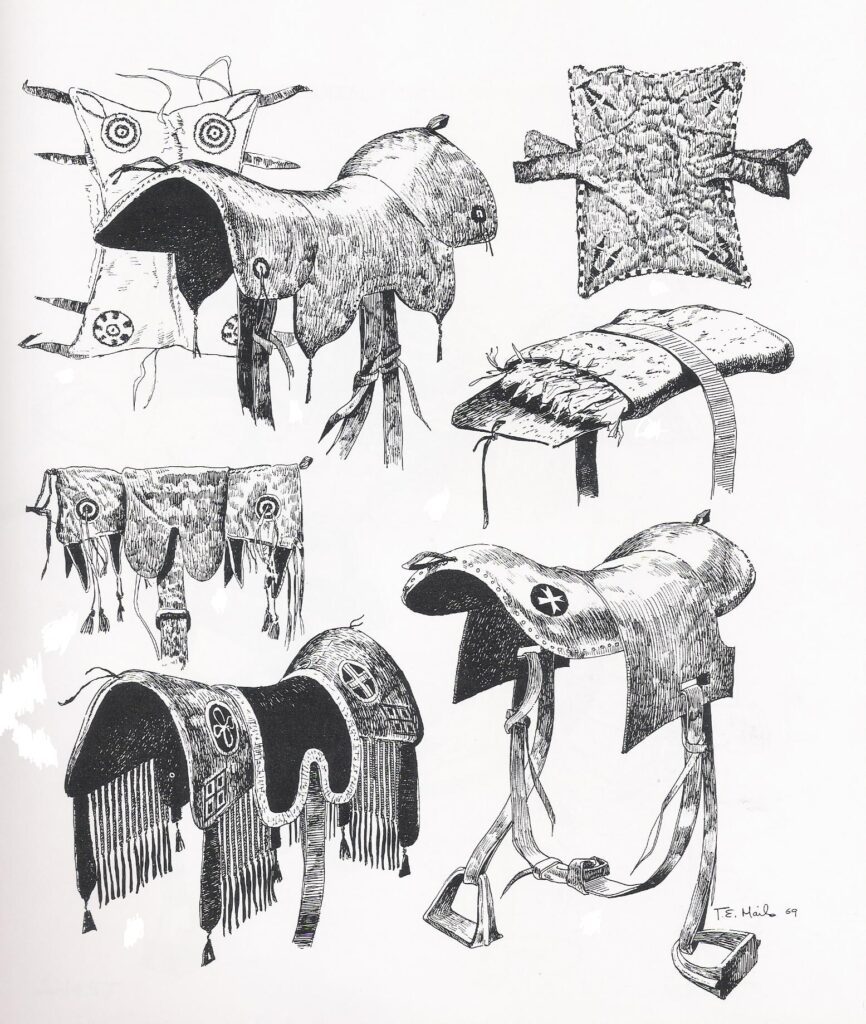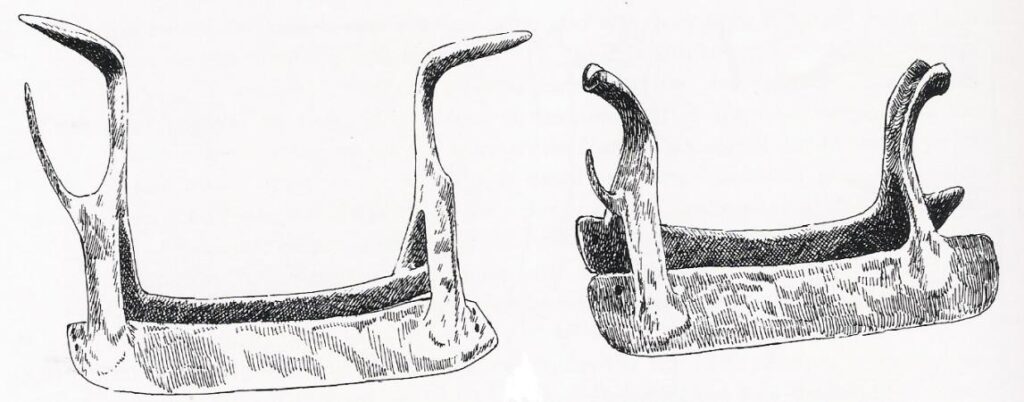IMEHA (International Model Equine Hobbyists Association) was an online photo showing site that existing until 2018. Included on the site were these guidebooks for judging and showing model horses in Performance classes. MEPSA has obtained permission to share the info contained in the guides.
Native American Historical Plains Costumes:
Practical horse tack and extraordinary ceremonial regalia reflecting the Plains Tribes dependency upon the buffalo. Historical Plains Tribes included the Arapajo, Assiniboine, Blackfoot, Cayuse, Cheyenne, Comanche, Cree, Crow, Hidatsa, Kiowa, Mandan, Nez Perce, Pawnee, Omaha, Osage, Shoshone, Sioux, Ute, and Wichita. Each tribe has customs, designs and color choices which were unique to that Native American Nation. For example, clothing and leather color trends are yellow-green in the far south, yellow-tan in the southern-central plains, gray-tan in the northern central plains, and gray-white or reddish-purple in the far north because of the different plant species available in the different regions to add to the solutions used to cure and dye leather. Also beading and quilling designs and colors were unique to certain tribes. For example, the Crow preferred geometric patterns, while the Blackfoot tribes used floral motifs. The Cheyenne used much yellow and green in their beadwork, while Sioux preferred light blue. Saddle styles ranged from a small flat stuffed pad to a graceful wishbone or chicken bone shaped, rawhide covered wooden saddletree with high pommel and cantle. (See photos Blackfoot, Cayuse, Cheyenne, Two, Comanche, Crow, Nez Perce, Plains, Sioux, Various Flat Saddles, Wishbone Style Saddles below) Horses, mules or donkeys are allowed.

